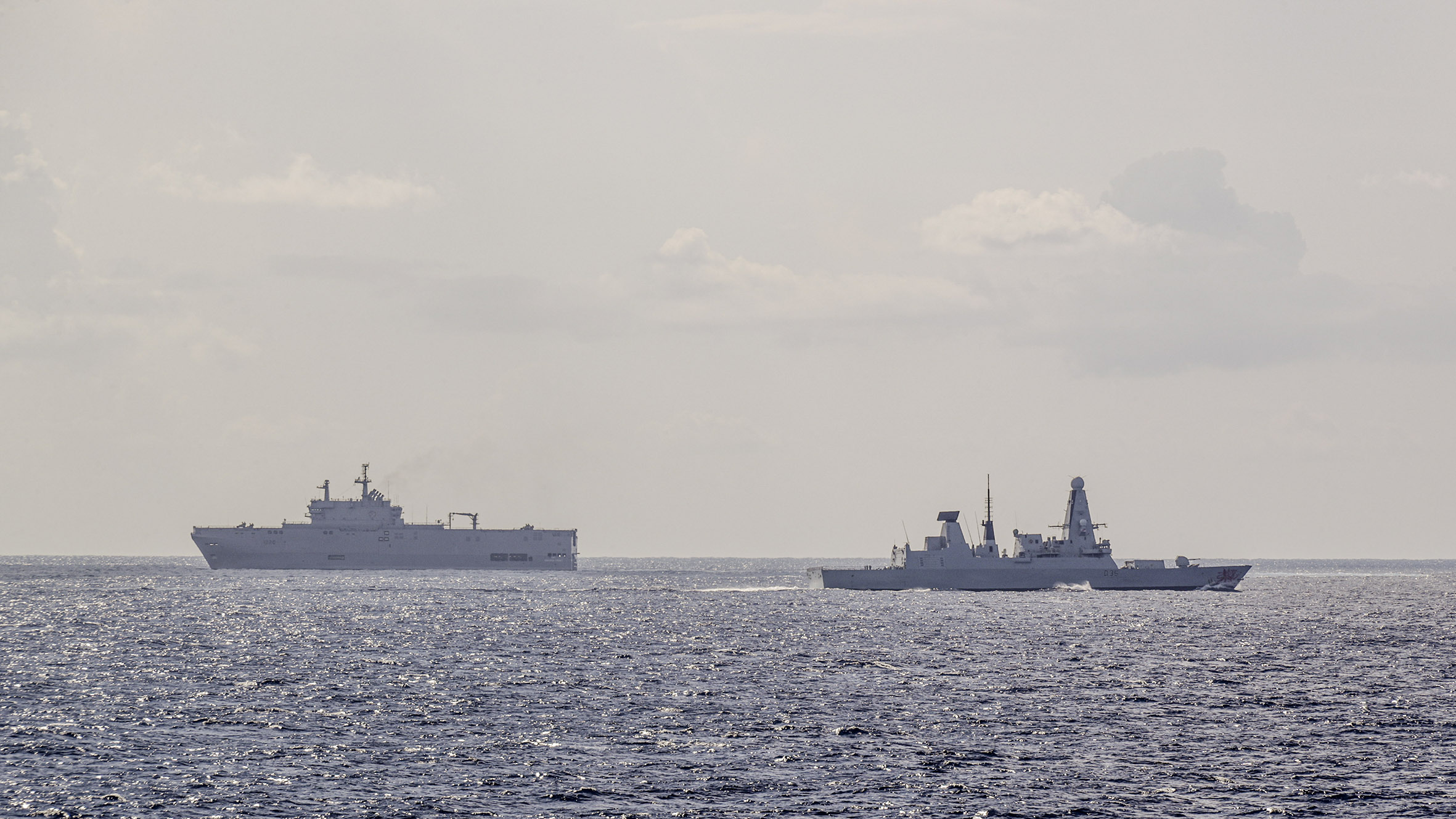Beach assaults, fast jet attacks and speedboats weaving between frigate and destroyers marked a major demonstration of Anglo-Egyptian naval forces in Alexandria. UK flagship HMS Albion and destroyer HMS Dragon joined the Egyptian Navy and Air Force for combined exercises on and off the sands of the North African shore, the culmination of a high-profile visit to the land of the pharaohs. An Egyptian military marching band welcomed the Royal Navy into port, raising the curtain on a mixture of joint training, talks and planning both alongside and at sea. Fresh from testing new kit and tactics over two demanding weeks in Cyprus, the UK’s Littoral Response Group crossed the Mediterranean for a week-long stay in Alexandria.

HMS Albion and Dragon were joined by the El Sadat, plus frigates ENS Sharm el Sheik and Ali Gad, while two Egyptian F16 Fighting Falcon jets simulated an attack on the combined Anglo-Egyptian task group. Surface attacks were also practised to ensure that the task group could operate together and its ships protect each other. The training concluded with a combined amphibious landing as Royal Marines landing craft from Albion formed assault waves alongside craft from the Sadat to land vehicles and troops across the Egyptian coastline.

Albion welcomed aboard Armed Forces Minister James Heappey, plus senior members of the Egyptian Armed Forces, while British and Egyptian military personnel took part in a series of discussions and briefings to discuss naval operations and amphibious warfare. In ENS Anwar el Sadat – a French-built Mistral-class assault ship – the Egyptian Navy possesses an impressive amphibious ship/helicopter carrier similar to UK flagship HMS Albion. With strict Covid precautions in place, warships from the Royal and Egyptian Navy, aircraft of the Egyptian Air Force and a fleet of landing craft from both nations mustered off Alexandria for a joint demonstration.

The Littoral Response Group (Experimentation) deployment he’s commanded since early September is a mix of training and supporting allies and partners in the Mediterranean region (such as Ukraine, Georgia, Tunisia and Egypt) and testing the kit and tactics which will shape the Future Navy and Future Commando Force. Upon leaving Egypt, the task group will come under NATO command as it takes part in Operation Sea Guardian, which is committed to maritime security across the Mediterranean.












